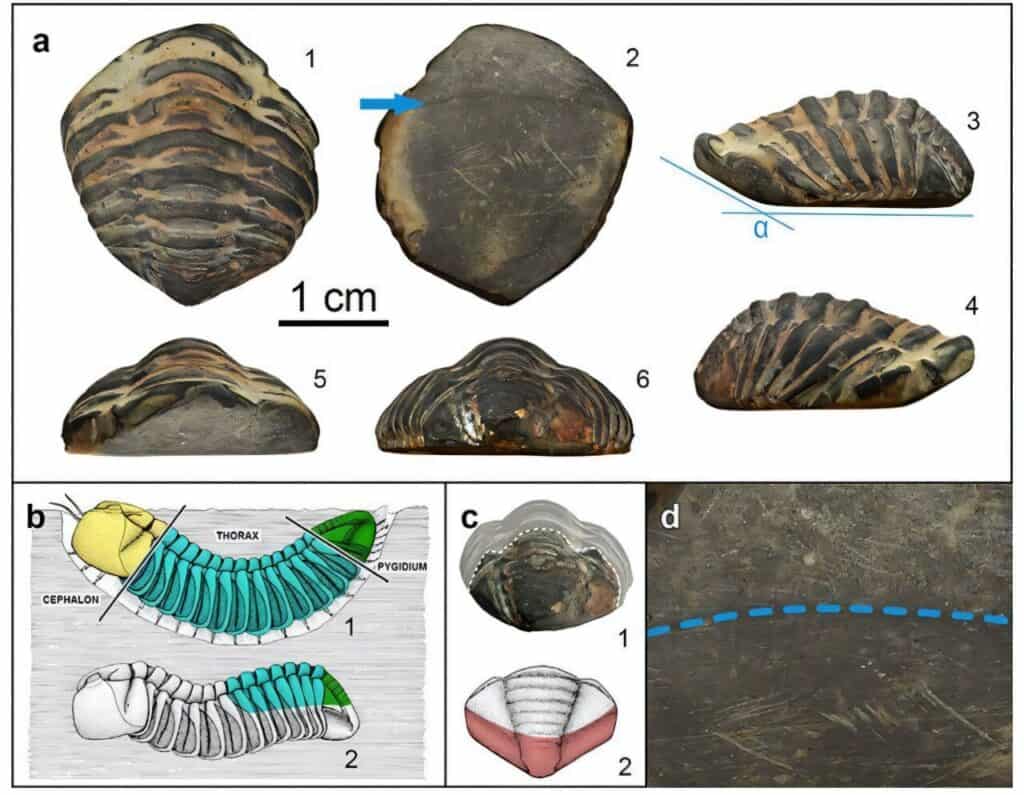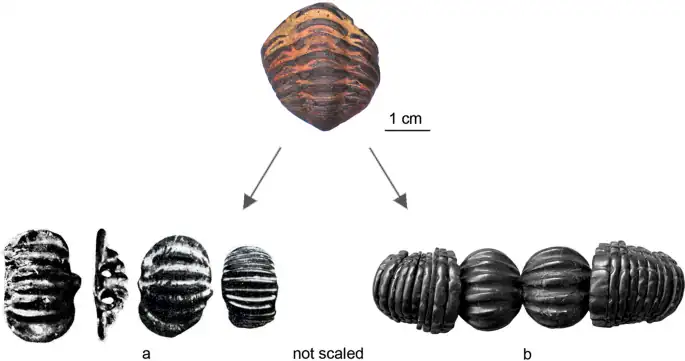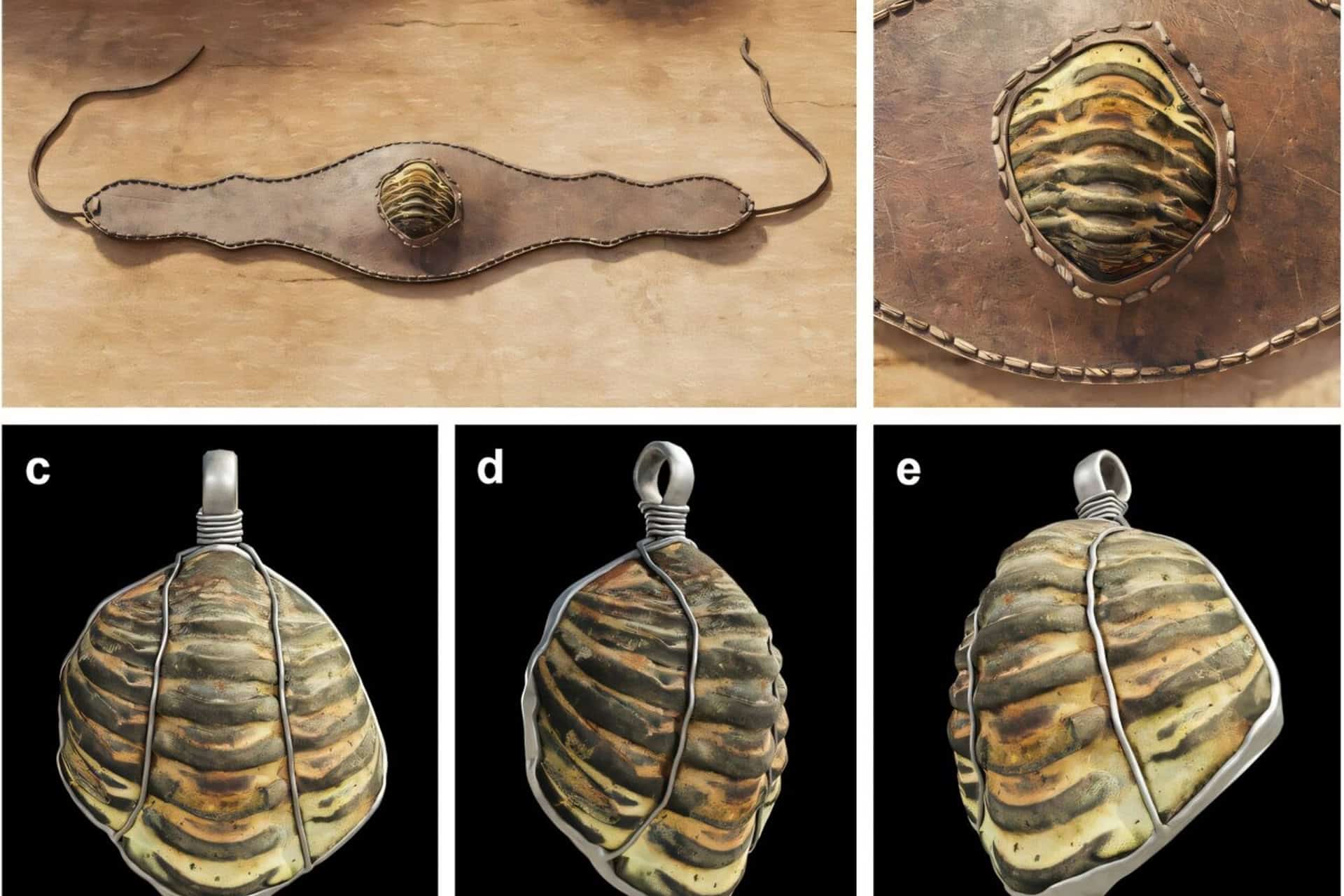We know that fossils are remnants of ancient life, but for people in ancient times, these may have simply been pretty rocks imbued with special powers. For instance, recently, a team of archaeologists in Spain uncovered a 450-million-year-old fossil that the ancient Romans may have worn as jewelry.
This fossil is from an extinct marine creature called a trilobite. It was carefully shaped by human hands and likely carried as a pendant or bracelet, possibly for beauty, status, or even magical protection.
This is the first time a trilobite fossil has been found employed as a Roman-era artifact. It’s only one of three known fossils that were deliberately collected by humans more than 1,000 years ago, and just the 11ᵗʰ trilobite fossil ever found at an archaeological site. Here’s what it tells us about the past.
Tracing the origin and purpose of the trilobite fossil
The fossil was found during excavations at A Cibdá de Armea, a Roman-era settlement in Galicia, Spain. It came from a domestic refuse deposit located inside a luxurious Roman house nicknamed the Hexasquel House. The site also contained other domestic items and a bronze coin minted during the reign of Emperor Augustus (27 BCE to 14 CE), which helped date the fossil to between the first and third centuries CE.
The fossil, which belonged to an extinct marine arthropod trilobite (Colpocoryphe sp.), had the typical segmented body, central ridge (rachis), and smooth lobes near its tail that helped researchers identify it. It was preserved as a natural cast, meaning its shape was captured in the surrounding rock after the creature died and then hardened into a fossil.
The reddish tint of the fossil came from iron oxide, a result of mineralization during fossilization. However, what truly caught researchers’ attention were the tiny modifications on the fossil’s surface. Using magnesium oxide vapor, high-contrast photography, and 3D photogrammetry, the researchers revealed seven clearly artificial wear facets — flat surfaces shaped by abrasion — on the left side and underside of the fossil.

“These modifications observed on the underside of the specimen, which exhibits up to seven artificial wear facets to flatten and shape the fossil, are interpreted as indicating its possible use within a pendant or bracelet, likely serving as an amulet with magical or protective properties,” the study authors note.
Another clue about its origin comes from its shape and color, which suggests that it was linked to trilobite fossils recovered from the Tristani Beds in the southern Central Iberian Zone, a region some 430 km (~267 miles) away. That’s a huge distance for an object to travel in ancient times, which strongly suggests that it was intentionally transported to the Armea site, perhaps because it was rare or believed to have special powers.
“It is plausible to consider that the Armea trilobite may have been perceived to hold magical and protective powers for its wearer, as is the case with fossils or even trilobites in other well-known archaeological contexts,” the study authors said.
What does the fossil tell us about ancient thinking?

Interestingly, the fossil was found in the same archaeological layer as a coin of Augustus, the first Roman emperor. Historical records by the Roman historian Suetonius describe Augustus as an avid fossil collector, someone who not only imported them from places like Greece but also dug them up himself on the island of Capri.
He reportedly created an early museum at his villa, where he displayed bones of giants and monsters, likely fossils. This adds even more weight to the idea that Romans, especially elites, saw fossils as meaningful objects.
The trilobite fossil amulet also reshapes our view of how ancient people interacted with the distant past. While the most likely interpretation is that it was used as jewelry, the researchers also consider other possibilities.
For instance, “the subcircular contour and polished lower surface of the trilobite specimen firstly suggests a possible use as a stone token (calculum) for ancient Roman board games such as ludus latrunculorum or terni lapilli,” the study authors said.
However, researchers need more evidence to confirm these possibilities. Hopefully, further excavations will reveal more such fossils and shed light on the different roles they played in ancient societies.
The study is published in the journal Archaeological and Anthropological Sciences.
